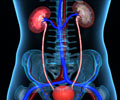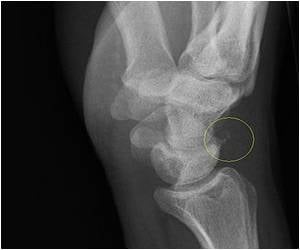Researchers say that this is the first time arsenic has been used to label antibodies for the detection of tumours.
Scientists at UT Southwestern Medical Center have shown in animals that arsenic linked to a drug that binds to the blood vessels of cancerous tumours provides a potent imaging agent that could some day allow physicians to identify unreachable tumours and monitor cancer’s response to therapy.
Researchers say that this is the first time arsenic has been used to label antibodies for the detection of tumours.Dr. Philip Thorpe, professor of pharmacology at UT Southwestern and senior author of the study, helped create the cancer drug called bavituximab, an antibody that homes in on a specific molecular target on the blood vessels that feed tumours. Bavituximab is being tested in clinical trials to treat solid-tumor cancers in combination with chemotherapy.
“While arsenic has been used as a poison for centuries, the dose of arsenic needed for imaging tumors is about one-millionth of that needed to cause toxicity,” Dr. Thorpe said.
“Arsenic-labeled bavituximab appears to be safe,” he added.
In the study, Dr. Thorpe and his colleagues injected radioarsenic-labeled bavituximab into rats with prostate tumours. When the bavituximab bound to its target on the tumour blood vessels, the tag-along arsenic created a “hot spot” that researchers then imaged using positron emission tomography methods.
The radioactivity levels produced by the arsenic are comparable to those used in standard, routine imaging procedures in humans. The technique allowed them to locate and capture unusually clear images of the tumours.
Advertisement
“We hope to use this technique to detect early tumor deposits that are not visible using other imaging techniques. The images we obtain are so clear that we may be able to see secondary tumors that have spread from the original tumor mass and lodged in distant organs,” said Dr. Thorpe.
Advertisement
“Long neglected as an awkward Cinderella, arsenic has great potential for new imaging agents and therapeutics based on multiple isotopes with diverse useful characteristics,” said Dr. Ralph Mason, professor of radiology, director of the UT Southwestern Cancer Imaging Program and one of the study’s authors.
The study is published in the journal, Clinical Cancer Research.
Source-ANI
SRM/L









